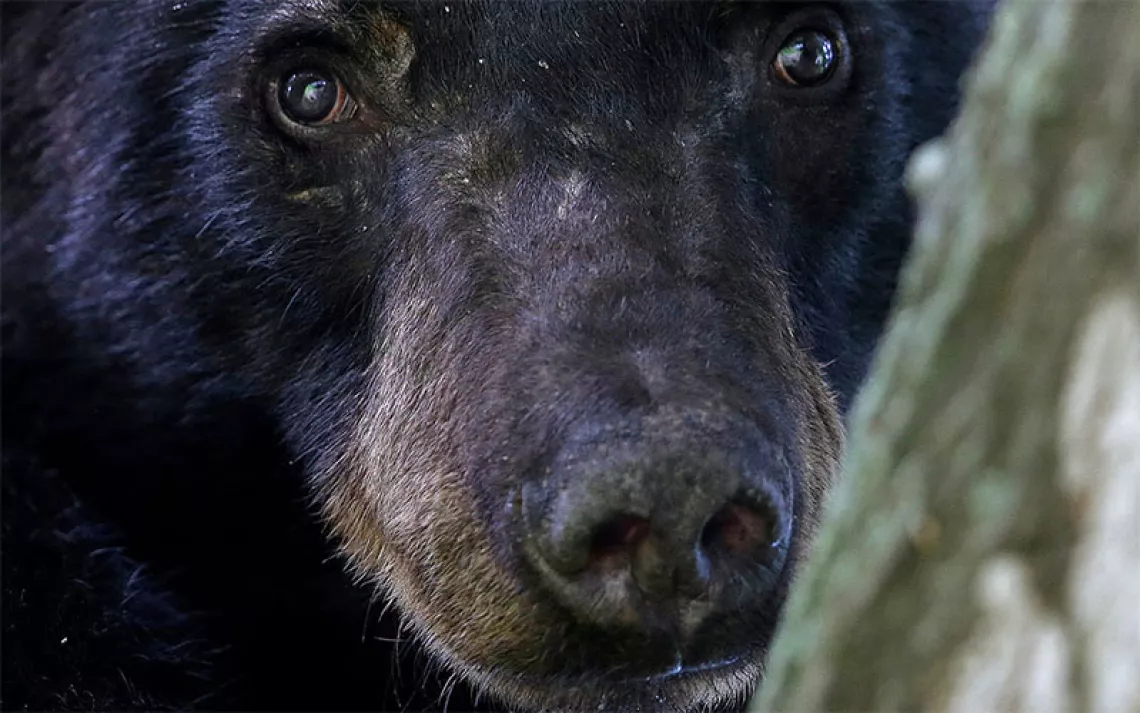Saving Darwin’s Finches
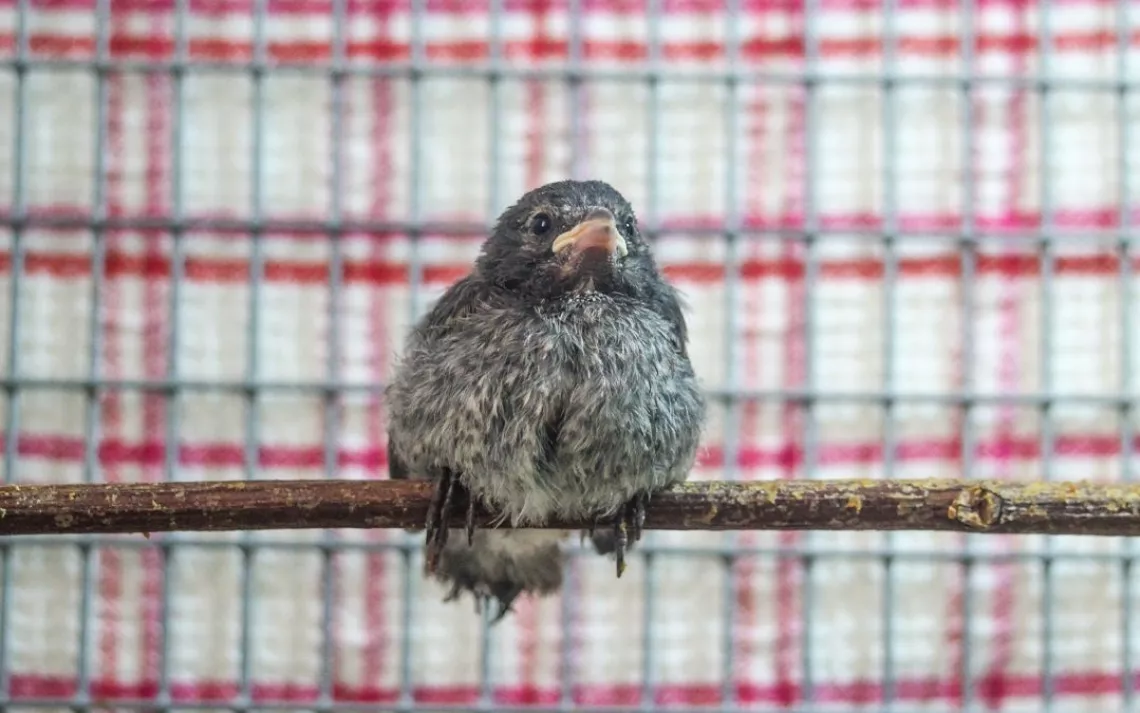
A mangrove finch fledgling. | Photo by Jenny Ruales, courtesy of the Charles Darwin Foundation
Turning the speckled egg slowly under a bright light, Ann Knutson, senior keeper at the San Diego Zoo's Avian Propagation Center, bent forward to scrutinize pink blood vessels laced beneath the shell. "See how dark the inside of this egg is?" she asked, as I moved my camera's lens close to her fingers. "That's the embryo. This egg will hatch in the next couple days." We were huddled in a cabin aboard the National Geographic Endeavour, an expedition vessel touring the Galápagos Islands. Here, the ship's most precious cargo—four eggs of the critically endangered mangrove finch—was nestled inside an incubator destined for the Charles Darwin Research Station.
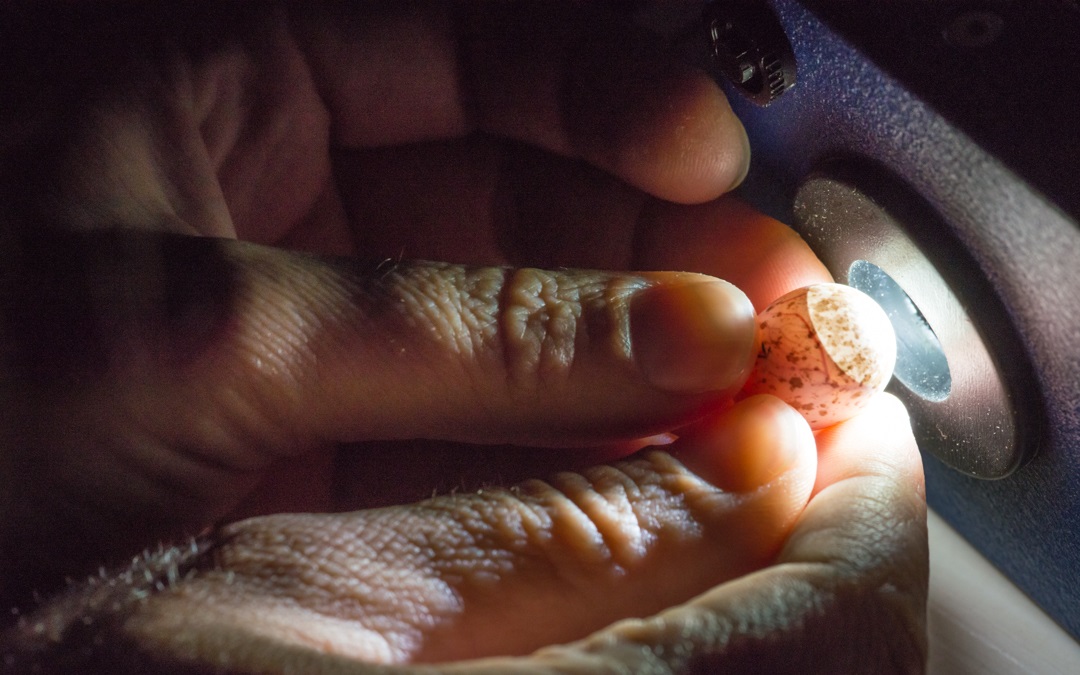
A mangrove finch egg being “candled,” or checked for fertility with a bright light. | Photo by Emily Mount Knutson had just returned to the ship after spending a few days in the field with a team from the Charles Darwin Foundation, an international organization that operates the Charles Darwin Research Station. Camped on Isabela Island, the team was monitoring the progress of a couple dozen mangrove finch nests. Knutson had arrived at a critical time: Scientists were climbing to the tops of black mangroves to collect eggs and chicks for transport to the research station. In recent years, the nests have also hosted the invasive fly Philornis downsi, spurring researchers to intervene on behalf of the dwindling mangrove finch population.
Mangrove finches are endemic to the Galápagos archipelago, and are 1 of 14 finch species known as "Darwin's finches." During Charles Darwin's famous visit to the islands in 1835, he collected finch specimens, which later factored into On the Origin of Species. Today, Darwin's finches—and their highly adaptable bills—are iconic examples of evolution in action.
The mangrove finch (Camarhynchus heliobates) is a small, brown, and unassuming bird that is easily confused with other finch species. Its habitat is composed of two sections of mangrove forest covering about 75 acres along the west coast of Isabela Island, the largest island in the Galápagos archipelago. Like other Galápagos species, the mangrove finch experienced the trauma of introduced predators as explorers, whalers, pirates, and settlers came to the islands and disgorged their passengers—most notably the black rat (Rattus rattus).
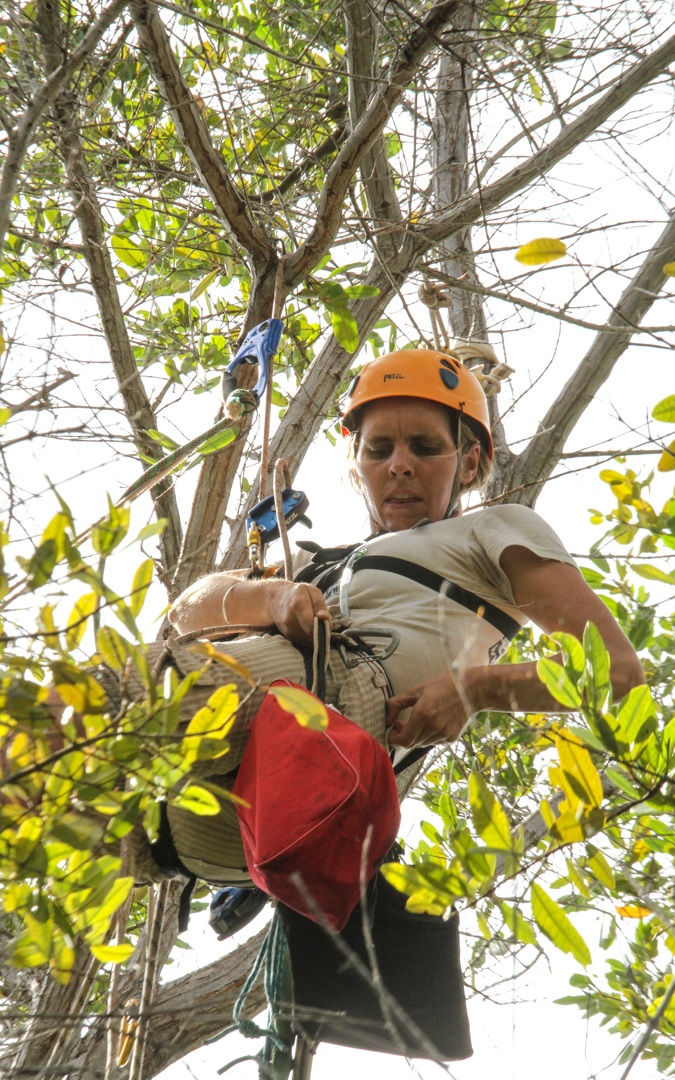
Mangrove Finch Project leader Francesca Cunninghame retrieves nests from high in the canopy at Playa Tortuga Negra. | Photo by Beate Wendelin, courtesy of the Charles Darwin Foundation During the finch breeding season, rats creep up the trees to devour eggs and chicks, causing as much as a 70 percent nesting failure for mangrove finches. To save the finch from impending extinction, scientists control rats around the breeding sites. Unfortunately, there are other introduced species that pose an equal threat to the finch's future. The most significant is Philornis downsi, a fly that looks much like a common housefly.
Philornis downsi is native to Brazil and Trinidad and made its way to the Galápagos decades ago. While adult flies are vegetarian and feed on fruit, they lay their eggs in bird nests, where the larvae begin life as carnivores. Crawling into the nostrils of chicks, the parasite eats the birds from the inside out. One mangrove finch chick was found hosting as many as 80 larvae. An overwhelming infestation of these flies has led to a mortality rate of 95 percent for mangrove finch nestlings in recent years.
Researchers estimate today's mangrove finch population is less than 100 individuals, and includes only 20 active breeding pairs. For a bird living on the edge of extinction, nesting success is utterly critical.
In 2007, the Charles Darwin Foundation, Galápagos National Park Directorate, and Durrell Wildlife Conservation Trust joined forces to protect the mangrove finch. Today, the Mangrove Finch Project stations scientists at finch breeding sites, monitoring nests and climbing trees to retrieve eggs and young. Once eggs and chicks are gathered from the nests, they are carefully transported to the Charles Darwin Research Station on Santa Cruz Island, about 60 miles away.
At the station, a quarantined chick-rearing facility greets the new arrivals. Eggs are incubated until hatching, and chicks are hand-fed 15 times a day. Their diet follows the general guidelines of what their parents would feed them in the wild: wasp larvae, moths, papaya, and ground meat. Scientists play finch songs and make toys out of paper and cardboard for the active chicks to tear to pieces, helping them learn skills for use later when they are returned to the wild.
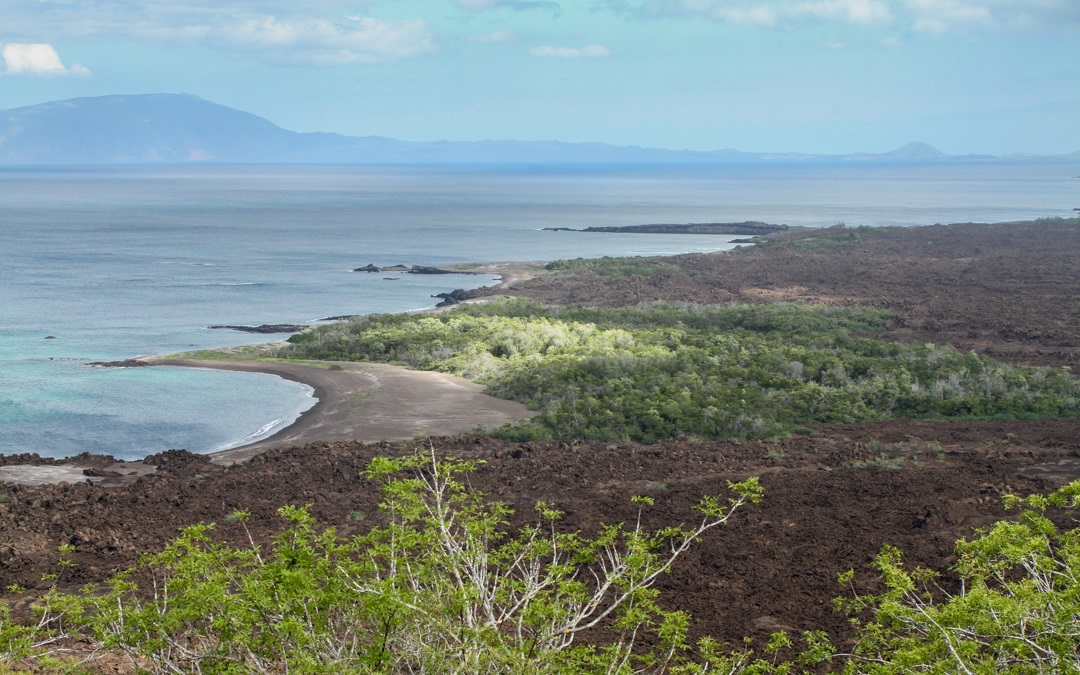
View over the mangrove finch breeding forests on Isabela Island. | Photo by Beate Wendelin, courtesy of the Charles Darwin Foundation After six and a half weeks, the chicks have fledged and are ready to return to Isabela. Scientists accompany the young birds back to their mangrove home, where they are placed in a mesh aviary for a month to adapt to the environment and learn to forage. Prior to release, they are fit with tiny transmitters and colored leg bands. Finally, the aviary's door is opened and left ajar. Researchers track the birds' progress for three weeks around the mangroves and into the lava fields, stocking the aviary with food for those birds that need an extra boost to get started on their own.
Since the program's inception, 38 chicks have been hand-raised and released back to the wild. These young birds will not return to the breeding site until they are three or four years old, but this year two birds from previous releases were sighted—a good indicator that the captive breeding program is a success. While researchers experiment with various methods of controlling and eliminating the flies from finch nests, the fate of the species rests in the hands of scientists dedicated to protecting them from extinction. “We are giving the mangrove finch population time,” Knutson said. “Time to adapt [to natural and human-introduced pressures] and for scientists to come up with a solution to the fly situation. We're going through a huge extinction [around the world] right now. To help even just one species is worthwhile."
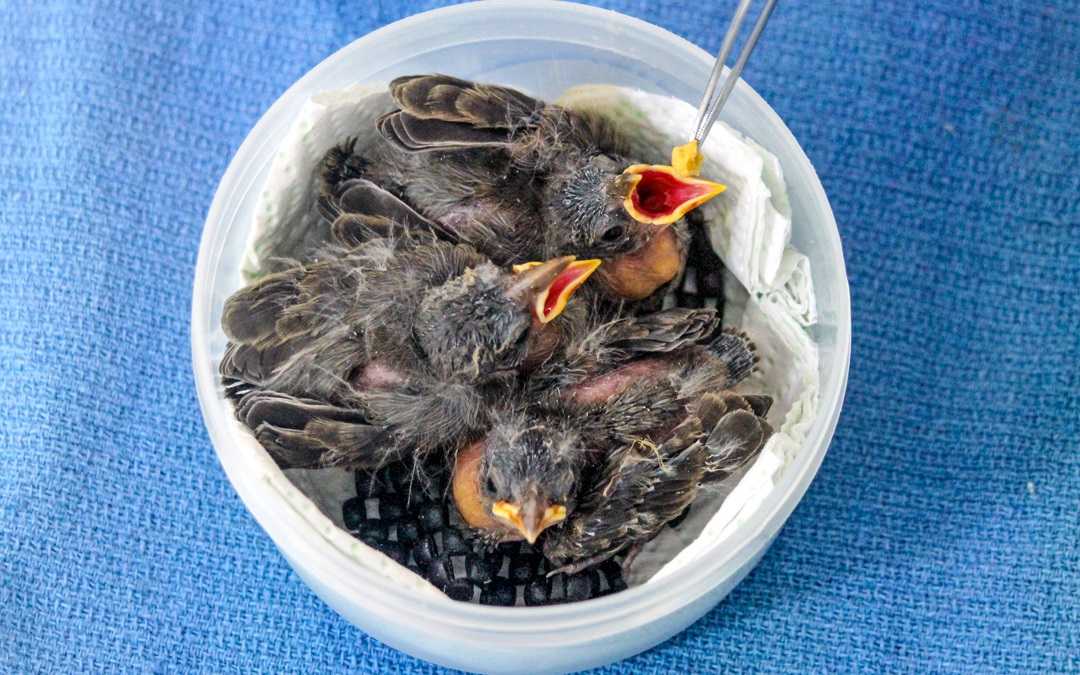
Mangrove finch fledglings during feeding. | Photo by Jenny Ruales, courtesy of the Charles Darwin Foundation
 The Magazine of The Sierra Club
The Magazine of The Sierra Club



